Digital Poster
Applications of Advanced Acquisitions
ISMRM & ISMRT Annual Meeting & Exhibition • 10-15 May 2025 • Honolulu, Hawai'i

 |
Computer Number: 17
3200. Visualizing
Gastric Motility: Utilizing FLASH 2 Real-Time MRI and Artificial
Intelligence for Quantification of Antral Peristalsis.
L. Großmann, L. Neubauer, L. Forstreuter, M. Blackledge, F.
Mankertz, D. Voit, J. Frahm, W. Weitschies
University of Greifswald, Greifswald, Germany
Impact: FLASH 2 real-time MRI has been shown to be
suitable for visualizing gastric motility of the stomach in
fed state. Together with specifically trained artificial
intelligence this could speed up the process to evaluate the
peristaltic status of the stomach.
|
|
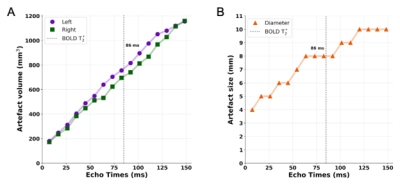 |
Computer Number: 18
3201. Towards
mid-field fMRI of DBS patients: Characterising electrode
artefact using multi-echo GRE.
D. Martinez, S. Kashyap, K. Zaraska, A. Boutet, K. Uludag,
I. Connell
University of Toronto, Toronto, Canada
Impact: 0.5 T reduces artefacts near DBS electrodes,
enabling imaging with enhanced safety. This supports better
fMRI applications for DBS patients, facilitating improved
acquisition methods that can lead towards evaluating DBS
effects on cognitive networks and treatment efficacy.
|
|
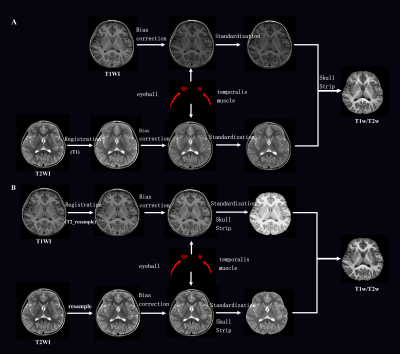 |
Computer Number: 19
3202. Automated
T1w/T2w Processing for Reliable and Efficient Myelination
Assessment in Pediatric MRI
T. Chen, L. Zhu, X. Wang, Y. Bian, S. Wang, Z. Cao, X. Li,
F. Shi, J. Yang
The First Affiliated Hospital of Xi’an Jiaotong University, Xi'an, China
Impact: The automated T1w/T2w processing method enhances
the accuracy, speed, and clinical applicability of
myelination assessment in pediatric MRI, supporting broader
and more reliable clinical use.
|
|
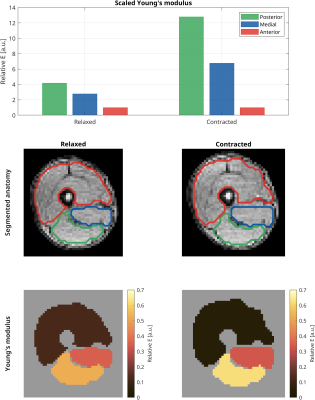 |
Computer Number: 20
3203. Quantitative
in-vivo analysis of biomechanical properties reveals tissue
stiffness changes during contraction of the thigh muscles.
D. Heesterbeek, M. van Riel, R. Sheombarsing, T. van
Leeuwen, M. Froeling, C. van den Berg, A. Sbrizzi
University Medical Center Utrecht, Utrecht, Netherlands
Impact: Access to in-vivo stiffness parameters could
give insight in muscle functionality. We developed an
algorithm that is able to recontruct quantitative
biomechanical properties from information acquired during a
simple dynamic loading experiment without using boundary
information.
|
|
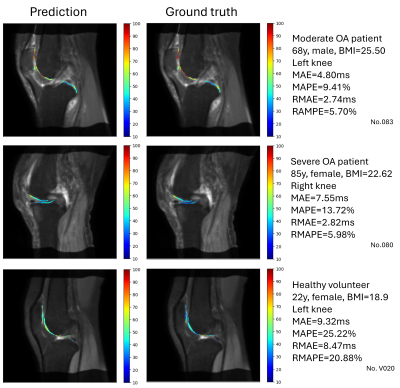 |
Computer Number: 21
3204. Utilisation
of Clinical Knee MRI to Accelerate Quantitative T1ρ Imaging of
Knee
J. Zhong, C. Huang, Z. Yu, F. Xiao, S. Li, O. Tim-Yun, H.
Ki-Wai, Q. Chan, J. Griffith, W. Chen
The Chinese University of Hong Kong, Sha Tin, NT, Hong Kong
Impact: Our proposed technology reduces the T1ρ contrast
needed for fitting using the clinical PD-weighted MRI. This
can contribute to clinical adoption of T1ρ.
|
|
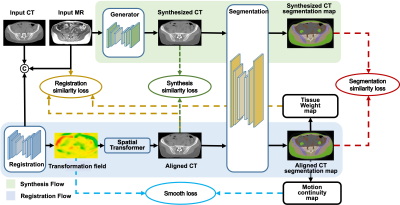 |
Computer Number: 22
3205. Enhanced
Attenuation Correction in Hybrid PET/MR Imaging Using a
Deep-Learning-Based Continuous μ-Map Generation Framework
H. Wang, Y. Wang, Z. Lin, Z. Zhang, Y. Yang, Q. Huang, B. Li
Shanghai Jiao Tong University, Shanghai, China
Impact: The proposed framework enhances PET/MR accuracy,
benefiting oncology and neurology diagnostics.
|
|
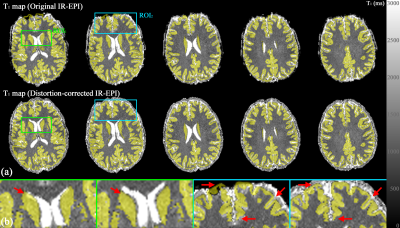 |
Computer Number: 23
3206. Rapid
T1 Relaxation Time Quantification with Enhanced Accuracy Using
Simultaneous Acquisition of Phase-Encoding in Inversion-Recovery
EPI
S. D. Yun, N. J. Shah
Forschungszentrum Juelich, Juelich, Germany
Impact: The proposed IR-EPI scheme enables effective
geometric distortion correction in IR-EPI data, with only a
negligible increase in scan time. Consequently, the greater
structural similarity to co-registered MP2RAGE significantly
enhances T1 mapping
accuracy, while providing rapid, whole-cerebrum acquisition
at 7T.
|
|
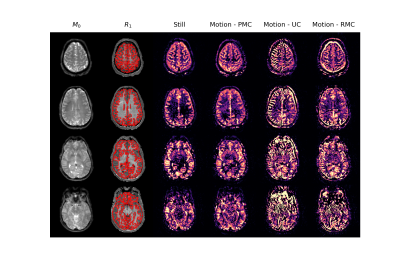 |
Computer Number: 24
3207. Prospective
Motion Correction of Arterial Spin Labelling Demonstrated with
Patient-Informed Motion
U. Lindberg, M. Laustsen, T. Ulrich, A. Perote, G. Crelier,
H. Larsson, T. Gaass
Copenhagen University Hospital - Rigshospitalet, Copenhagen, Denmark
Impact: This study demonstrates that prospective motion
correction significantly enhances ASL image quality, making
it more clinically viable for motion-prone patients. The
findings encourage further exploration of real-time
correction methods, potentially expanding ASL’s diagnostic
applicability across diverse patient groups.
|
|
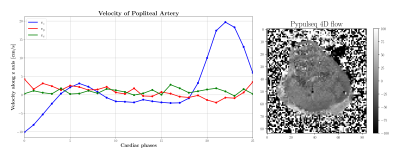 |
Computer Number: 25
3208. Vendor-agnostic,
open-source 4D flow
M. Maggioni, S. Räuber, F. Santini
University of Basel, Allschwil , Switzerland
Impact: This work provides open-source, vendor-agnostic
implementations of 4D flow and gradient probing sequences.
The latter enables mapping of gradient directionality,
crucial to accurately interpret results. Together, they
represent a building block towards a reproducible dynamic
imaging protocol for skeletal muscles.
|
|
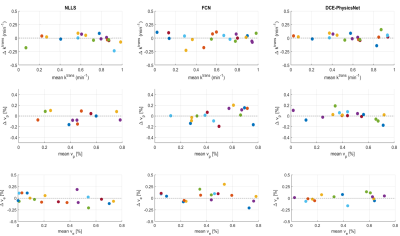 |
Computer Number: 26
3209. Blood-brain
barrier estimation from DCE MRI using physics-based deep
learning approach
J. Banzi, A-M ILYAS, Y. LIU, H. LIU, Y. Zhang, J. HUANG, K.
W. CHAN
Hongkong Centre for Cerebro-Cardiovascular Health Engineering, Hongkong, Hong Kong
Impact: The proposed deep learning approach demonstrates
a reliable estimation of BBB parameters for DCE MRI using
only a contrast-enhanced scan. It has the potential to
facilitate the wide clinical use of DCE MRI.
|
|
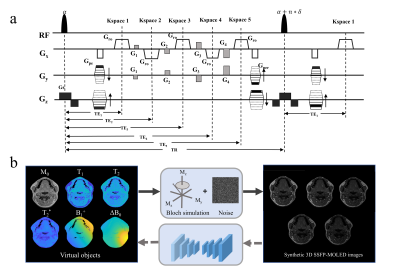 |
Computer Number: 27
3210. Ultra-fast
multi-parametric quantitative imaging of the head and neck via
3D SSFP-multiple overlapping echo detachment (SSFP-MOLED)
J. Yang, K. Xiong, Q. Yang, L. Zhu, J. Zhou, L. Lin, J.
Wang, Z. Chen, S. Cai, C. Cai
Xiamen University, Xiamen, China
Impact: 3D SSFP-MOLED can achieve ultra-fast
multi-parameter quantification of M0,
T1,
T2,
T2*,
B1+,
ΔB0,
with the characteristics of no distortion and
self-registration, and has the potential for auxiliary
clinical diagnosis of head and neck diseases.
|
|
 |
Computer Number: 28
3211. Initial
Impression of MR Guided PET Reconstruction in Detecting Focal
Cortical Hypometabolism in Epilepsy Patients
C. Lin, M. Spangler-Bickell, D. Litwiller, A. Smith, R.
Pooley, E. Middlebrooks
Mayo Clinic, Jacksonville, United States
Impact: MR-guided PET reconstruction allows better
visualization of focal cortical hypometabolism which may
lead to improved diagnosis of epilepsy.
|
|
 |
Computer Number: 29
3212. A
pulse sequence for single breath hold 3d fetal magnetization
transfer
S. Sadanand, R. Stobbe, T. van Mieghem, S. Shinar, P.
Krishnan, E. Miller, G. Stanisz, D. Sussman
Toronto Metropolitan University, Toronto, Canada
Impact: This work is a stepping stone toward clinical in
utero metabolic and microstructural imaging. The development
of this sequence demonstrates a framework that can be
applied to other saturation transfer analytes, making
endogenous metabolic and microstructural imaging more
broadly applicable.
|
|
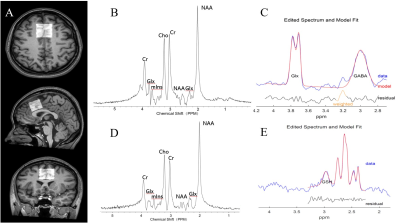 |
Computer Number: 30
3213. Test-Retest
Precision of Brain Metabolites in Healthy Participants using
31P-MRS and 1H MEGA-PRESS at 3T Multi-nuclear MRI System
S. Hu, W. Zhu, X. Zhang
Tongji Hospital of Tongji Medical College of Huazhong University of Science and Technology, Wuhan,China, China
Impact: This study reveals the range of reliability of
MEGA-edited GABA+, Glx and 31P-MRS techniques in
application.
|
|
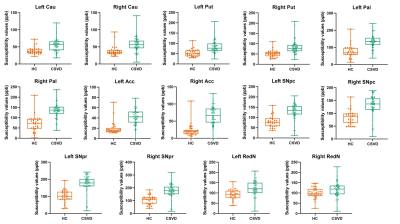 |
Computer Number: 31
3214. QSM
source separation Reveals Iron Deposition in cerebral small
vessel disease
M. Feng, X. Liu, S. Zhang, B. Xu, J. Lu
Department of Radiology and Nuclear Medicine, Xuanwu Hospital, Capital Medical University, Beijing, China
Impact: In this study, we used QSM source separation to
distinguish paramagnetic iron and diamagnetic myelin
contributions, providing a strong theoretical basis and
accuracy support for the existence of the phenomenon of iron
deposition in deep nuclei in CSVD patients.
|
|
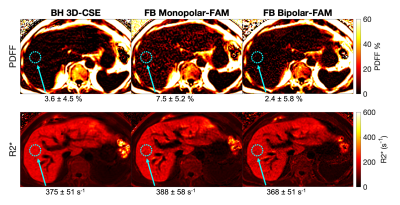 |
Computer Number: 32
3215. Bipolar
Readouts Improve Quantitative Performance of Motion-Robust,
Flip-Angle Modulated PDFF and R2* Mapping at High R2*
J. Tang, D. Tamada, J. Starekova, A. Anagnostopoulos, A.
Murphy, N. Duritsa, G. Fullerton, J. Wang, A. McMillan, A.
Carrel, I. Rosado Mendez, S. Reeder, D. Hernando
University of Wisconsin-Madison, Madison, United States
Impact: Bipolar-FAM
may facilitate free-breathing FAM-based fat and iron
quantification in patients with elevated R2*. The faster
bipolar readouts improve motion robustness and enable
breath-held FAM, which provides consistently-registered
slices with good breath-holds, and remains motion-artifact
free with poor breath-holds.
|
The International Society for Magnetic Resonance in Medicine is accredited by the Accreditation Council for Continuing Medical Education to provide continuing medical education for physicians.